Concert Review
Sacramento Choral Society & Orchestra
Verdi Requiem - May 14, 2022
(This is not a critical review, but rather a report of one man’s experience of this event.)
This performance of the Verdi Requiem was a momentous occasion for all involved: director, singers, orchestra, staff, audience ─ and arguably the Sacramento cultural scene. It was the first opportunity for the Sacramento Choral Society & Orchestra (SCSO) to perform in the remodeled SAFE Credit Union Performing Arts Center ─ an enormously improved facility for those with strong memories of its predecessor. For SCSO and especially for Music Director Donald Kendrick, it was an end to two years of frustration. The Verdi Requiem was originally scheduled for March 21, 2020. During SCSO’s 3 months of rehearsals, the Covid-19 pandemic became increasingly threatening, and news of the Requiem’s postponement came on March 12. A subsequent concert was cancelled, and the Requiem was rescheduled for March 2021 ─ until the entire 2020-2021 season had to be cancelled. With pandemic concerns unabated, concert after concert had to be cancelled ─ until tonight ended the long drought. Still, with another Covid surge threatening Sacramento, the enthusiasm for tonight’s concert was dampened just a bit by the facility’s decision that everyone in the audience would have to be masked, an inconvenience made tolerable ─ for me at least ─ by anticipation of this long-awaited event.
Tonight was my third opportunity to appreciate all the improvements in this new performance venue. Yet as I made my way to my seat, I marveled again at the elegance and convenience built into the lobbies and facilities. Seated, and with just 20 minutes to the start of the concert, I focused my attention on the stage. It was immediately apparent why SCSO singers were so enthused about their new risers. Their breadth seemed nearly as wide as the stage itself, allowing more space between seats than was possible with the old risers. Perhaps more importantly, the risers formed a wide curve. With singers on the extremes turned a little more toward each other, they would be more able to hear those in other sections.
Orchestra members had begun taking their positions before I arrived. All were masked, except those who were playing wind instruments. With 15 minutes to the start of the performance, the singers began to enter and take their seats. With the orchestra masked, perhaps I shouldn’t have been surprised that the singers wore masks, too. According to the program, there were 147 members of SCSO and 17 choristers from the Schola Cantorum of Sacred Heart Church. I should add that there were 56 members of the orchestra. You’ll find names of all the performers in the attached program.
(Click here to open the program in a new window.)
Preliminaries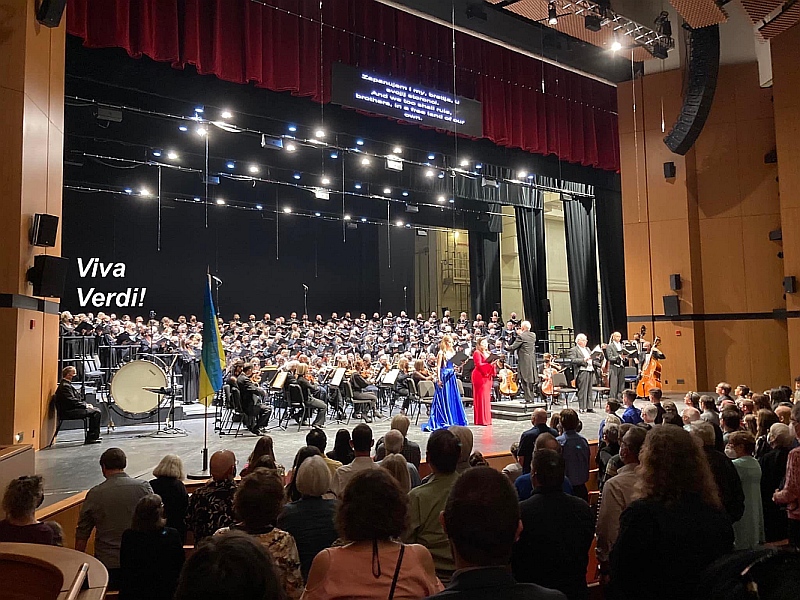
When it was time for the concert to begin, SCSO Board President and CEO James McCormick stepped out to greet the audience. He noted that “this has been a long time coming,” to which the audience responded with applause and cheers. He proceeded to recount how SCSO had met the challenges created by the pandemic, and he expressed the organization’s enthusiasm for the remodeled venue and the risers, punctuated with renewed applause from the audience. McCormick then recognized the SCSO’s major donors before proceeding to a couple of special announcements. First, the concert was dedicated to Sacramento restaurateur, Biba Caggiano, who had passed on in 2019. Next, to show everyone’s support for the bravery of the Ukrainian people, McCormick asked that the audience stand when the conductor and soloists entered for a presentation of the Ukrainian National Anthem.
This was a dramatic gesture that seemed to have the enthusiastic support of the audience. Indeed, when Donald Kendrick and the soloists entered and took their positions on the stage, we all stood as the choruses and orchestra presented this stirring anthem. The words in Ukrainian and English were displayed as supertitles above the stage, and I dare say emotion was strong throughout the room. I looked over the edge of the lower balcony and saw a person waving a small Ukrainian flag. Behind me, I thought I could hear someone singing along with the chorus.
The Concert Begins
After only a short delay, Conductor Donald Kendrick gave the downbeat to the cellos to begin the Requiem, soon followed by the sotto voce choral entrance. Let me say first that the acoustics of the performance were excellent, and I believe that everyone in that vast auditorium could hear these subdued entrances. In the first of the many dynamic contrasts to come, each choral section entered in sequence with a strong forte statement of the fugue that began, “Te decet hymnus, Deus, in Sion….” I must add I was particularly struck by the magnificent sound from the tenors and basses who began this fugue.
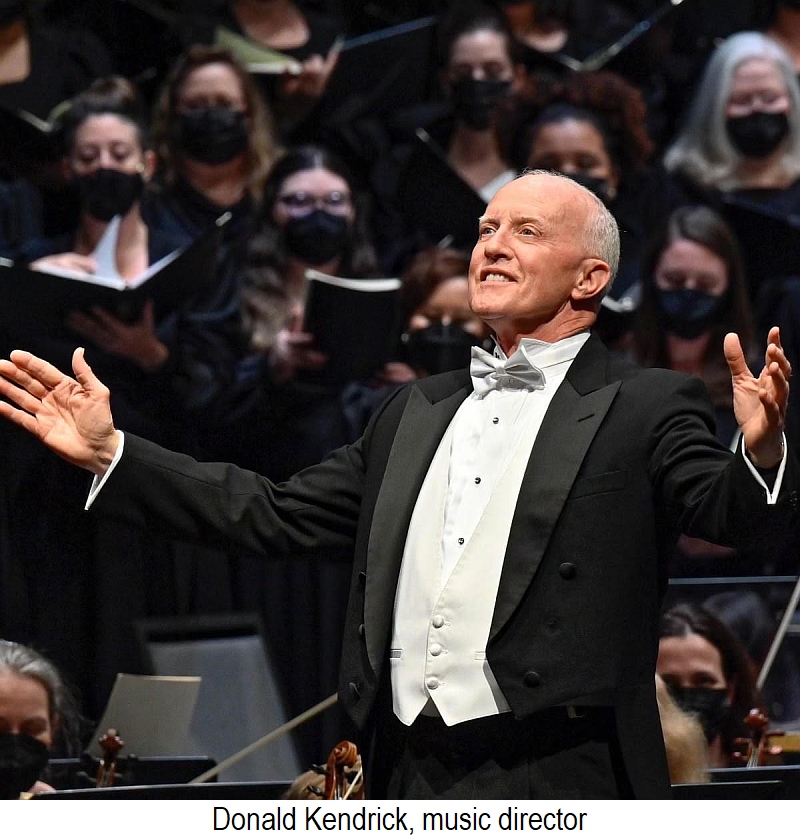 It
took me a few moments to realize that Kendrick was conducting this piece
from memory. I’ve seen other conductors (including Kendrick) conduct
major works from memory, but this was an hour and half of music,
involving a chorus (sometimes double), soloists, and 17 instrumental
sections. To master the entrances, tempos, dynamics and nuances of this
enormous piece seems like a superhuman accomplishment to me. Imagine the
spirit that is instilled in singers and players when they see this
degree of confidence and competence in their director!
It
took me a few moments to realize that Kendrick was conducting this piece
from memory. I’ve seen other conductors (including Kendrick) conduct
major works from memory, but this was an hour and half of music,
involving a chorus (sometimes double), soloists, and 17 instrumental
sections. To master the entrances, tempos, dynamics and nuances of this
enormous piece seems like a superhuman accomplishment to me. Imagine the
spirit that is instilled in singers and players when they see this
degree of confidence and competence in their director!
The Requiem and Kyrie section of this piece have so many beautiful (and stirring) themes. I was a chorus member in several performances of the Requiem several decades ago, and after all that time, these themes were very familiar to me tonight, even though I haven’t listened to a performance or even a recording of the piece in all those decades since. And I dare say that these melodies are a gift that tonight’s singers and players will carry with them for the rest of their lives, too. And as for the audience, I’m sure that, time and again, their spirits were lifted by the abundance of memorable themes.
From the start of this performance (and right through to the end), I was impressed with the quality of the supertitles. They were in both Latin and English, easy to read in large white letters above the stage. And they were advanced with admirable precision ─ no small feat with the constant overlapping of vocal lines.
So it was the supertitles that announced the Dies Irae movement. For anyone who has experienced the Verdi Requiem, this is surely the most dominating memory: it strikes one’s sensibilities like a hurricane that starts with four thunderclaps. Tonight, the excitement of the Dies Irae generated by chorus and orchestra was nearly overwhelming. And I can still, in my mind’s eye, see Kendrick cuing the bass drum player with a full thrust of his arm, as if he were throwing a projectile. Verdi knew that this was a peak moment in his composition, and so we got to hear it several times, including in the Libera Me movement ─ starting with those wailing triplets in the three upper voice parts and the furious playing by the strings.
As much fun as is hearing dramatic music at full volume, I was most impressed tonight with the dynamic control ─ initiated by the conductor and executed by the players and singers. Even in short phrases, I was aware of elegantly controlled crescendos and diminuendos. And I have to add that I was struck with the chorus’s control when singing softly. I think any singer will agree that it’s harder to sing softly and create a good tone, especially when you’re singing the same note as dozens of others around you. And Verdi demands as much soft singing as singing at full volume. I still have my vocal score, and in it, there are many “ppp” dynamic indications ─ and more than one “pppp” ─ not to mention the direction on the very first page, il più p possibile.
Soloists
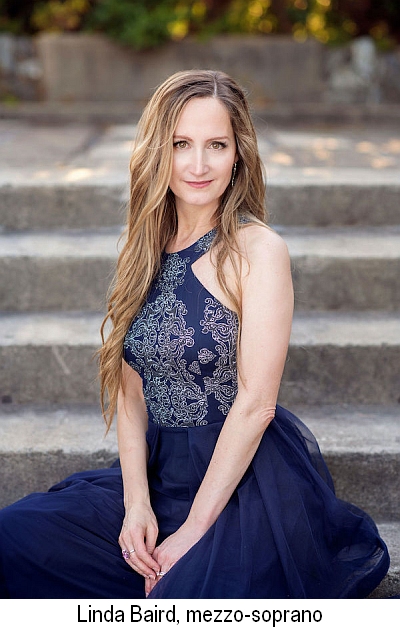
The Requiem trains its spotlight on the soloists, as does the spotlight of an opera, the musical form for which Verdi is best known. Accordingly, each of tonight’s soloists had many opportunities to lend their artistry to this “masterpiece of a performance of a masterpiece” ─ and none of them fell short.
Mezzo-soprano Linda Baird was the first to capture my attention. To me, it seemed that she generally sang with artistic restraint, reserving the available power in her voice only when it was really required. I also appreciated the fact that her pitch was consistently accurate, in contrast to what I’ve heard from other soloists on other occasions, whose pitch was like the cloud of electrons around the nucleus of an atom. She also had a voice that could bring forth a range of timbres, very useful in the great variety of emotions that Verdi had written into his composition.
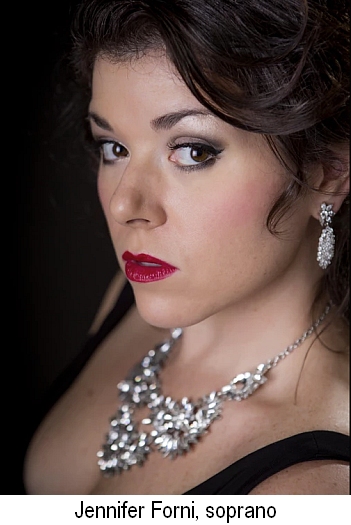 I
felt that bass-baritone Timothy Jones played his part with dramatic
sensitivity, including some magnificent low notes. To me, his solo in
Confutatis was a shining moment for him; a plaintive highlight of
the Requiem that he performed with a consistently covered sound,
while working mostly toward what I assume must be the top of his range.
I
felt that bass-baritone Timothy Jones played his part with dramatic
sensitivity, including some magnificent low notes. To me, his solo in
Confutatis was a shining moment for him; a plaintive highlight of
the Requiem that he performed with a consistently covered sound,
while working mostly toward what I assume must be the top of his range.
I was frequently impressed with soprano Jennifer Forni’s control of her high notes. Indeed, I had a discussion with another audience member on the way out about the excellence of her many high B-flats, including that beautiful, extended B-flat at the end of the Et lux perpetua section in the Libera Me movement (not to mention the extended high C in her Libera me solo toward the end of the Requiem). Most importantly, though, I appreciated the listenable, accurate, unforced tone that she displayed consistently throughout the evening.
Of course, tenor Robert Breault had many opportunities to display his considerable talent. I felt that he shone in his mournful, lamenting Ingemisco solo. I also really enjoyed his work in the Domine Jesu (Offertorio) section. I was aware of his restraint, when so many tenors might have been tempted to oversing in order to be heard above the other members of the quartet.
And speaking of combinations of soloists in quartets, trios or duets, I appreciated what seemed to me like the excellent balance of the two women’s voices in their Recordare duet in the Dies Irae movement. I felt that they were singing together ─ not just two soloists, each simply following her own line.
During a long concert, one tends to notice anything out of the usual
in the demeanor of the performers, and at the beginning of the Lux
Aeterna, it was interesting to see the Linda Baird allow her arm to
fall to her side, holding her music with just one hand (until she had to
turn the page). To me, it appeared to be a gesture of great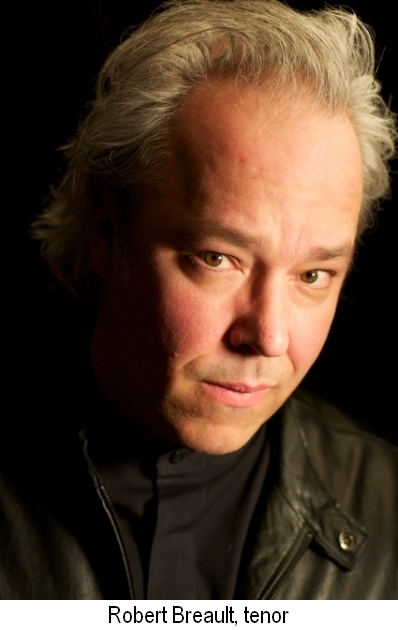 confidence.
confidence.
These brief observations aren’t meant to diminish the consistent, professional performances of these artists throughout the length of this major work.
Orchestra
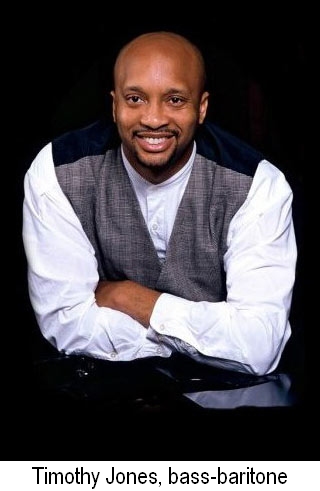 One
delightful surprise for me (and I imagine for most of the audience) was
the use of offstage trumpets. My clue about this was noticing Kendrick
glance over his shoulder at one point. Presently, I saw a group of brass
players (couldn’t count how many) at the farthest extent of the second
balcony on each side of the theater. The echo effect they produced was a
thrilling touch at a key point in the Dies Irae.
One
delightful surprise for me (and I imagine for most of the audience) was
the use of offstage trumpets. My clue about this was noticing Kendrick
glance over his shoulder at one point. Presently, I saw a group of brass
players (couldn’t count how many) at the farthest extent of the second
balcony on each side of the theater. The echo effect they produced was a
thrilling touch at a key point in the Dies Irae.
Maybe this is the time to note that I bring a singer’s perspective to this review. I was much more sensitive to the artistry of chorus and soloists than to that of the orchestra. Still, I couldn’t help but appreciate the skill of the flautists in the Agnus Dei, with their pleasing tone and well-measured eighth-note runs. I was likewise impressed with skillful playing of the bassoons in Quem Patronem. At one point, what I was hearing from the orchestra compelled me to write in my notes: “Surely this is a professional orchestra of the highest quality.”
Thinking about the contributions of the instrumental sections combined with the intersecting lines of chorus and soloists, I think it takes an extraordinary cognitive gift to be able to appreciate the subtle movements in different vocal or orchestral parts, especially when they are moving rapidly. But then, many people surely have degrees of this gift.
One who must have that gift to an exceptional extent is Conductor Donald Kendrick. I had the sense that he was always in control of every detail of the performance, shaping the sounds, cuing the attacks, monitoring the balance, and encouraging singers and players alike.
A Few Final Comments
I’ll confess that in spite of its many delights, I suffered through this concert, having my breathing restricted by the mask that I was careful to wear properly. Hard as it was for me, I can’t imagine what the singers endured for that hour-and-a-half. I was too far away to tell, but I hope that they were all wearing singers’ masks, which give a larger air space that the usual K95 masks.
Here’s one more thought about masks. Throughout this concert it seemed to me that I was hearing a stronger sound from the tenors and basses. I know that Donald Kendrick takes great care to balance his choruses, and on this night there were almost equal numbers of men and women. So I can’t help but wonder whether the masks dampened the sound of the women more than the men, perhaps having to do with them singing at higher pitches.
That said, I felt that the singing of the combined choruses was magnificent. If there were flaws in their performance, I doubt that any but Kendrick himself could have perceived them. On the contrary, listening to their work was exhilarating for the artistry with which they navigated the many changes throughout this work.
Verdi’s Requiem is a tour de force with an extraordinary variety of emotions, musical themes, vocal effects, and “scenes” (or combinations of choral and solo vocal parts). It would be tedious to comment on more than a fraction of them, but there is one more moment that I want to point out. It was at the beginning of the Libera Me movement where the chorus chants the text sotto voce without accompaniment. Especially as performed tonight, it was simply magical.
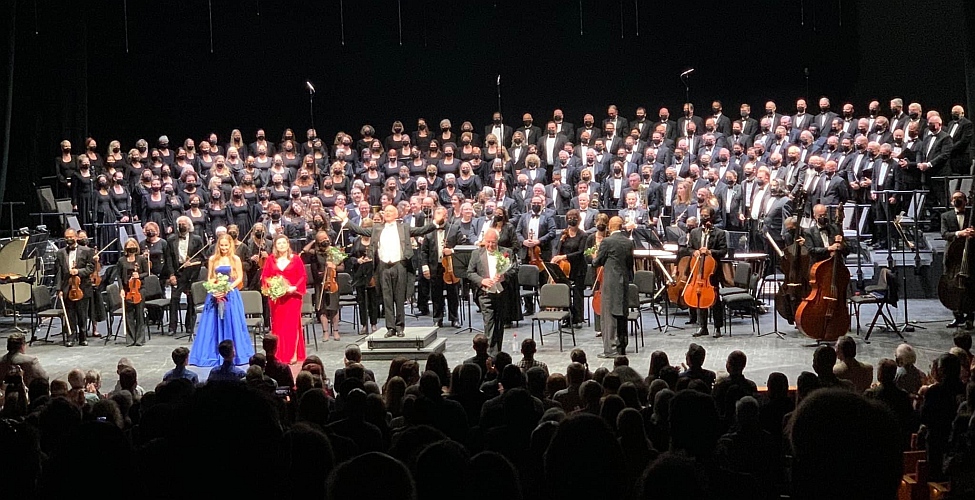
Indeed, this was just one memorable moment in an unforgettable performance by chorus, soloists, orchestra and director. And with the conclusion of the Requiem, the audience ─ which had sat in enforced silence for an hour-and-a half ─ erupted in applause and cheers, with everyone on their feet. Then there was an extended period of appreciation for what had been an authentic, inspired presentation of this masterwork, a performance so long delayed, but fulfilling its promise of excellence.
Follow the Sacramento Choral Society & Orchestra through their website, www.sacramentochoral.org. Note that a recording of SCSO’s March 2011 performance of the Verdi Requiem is available through this site.
Picture credits: Marco Borrelli (Forni) and Dawn Cooper Photography (Baird)
Dick Frantzreb is editor of the Capital Region Performance Gallery and co-founder and past President of the Sacramento Valley Choral Coalition. He currently edits the Sacramento Choral Calendar and the Placer Performance Calendar.